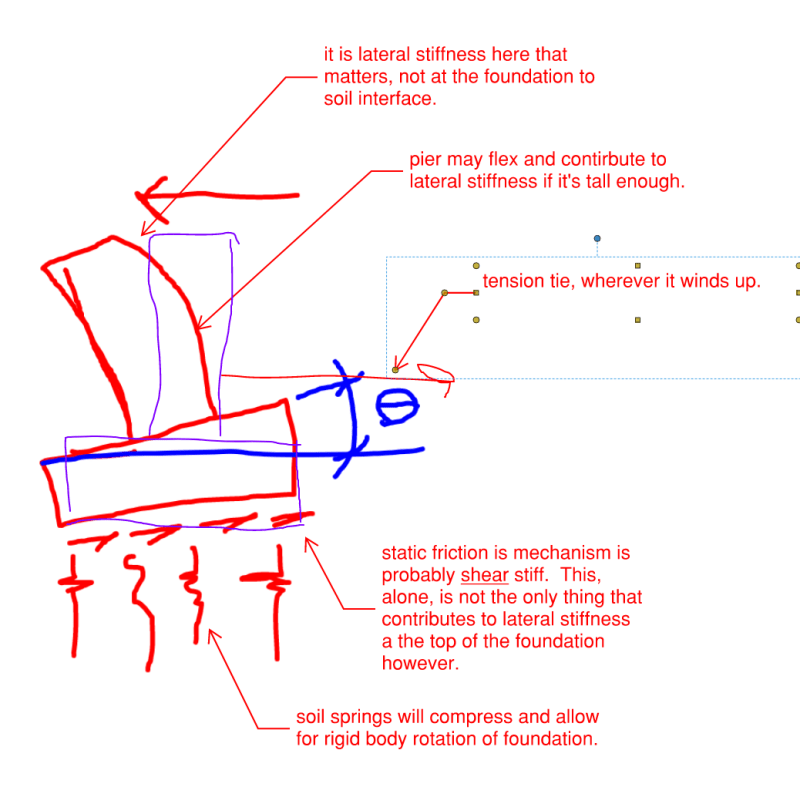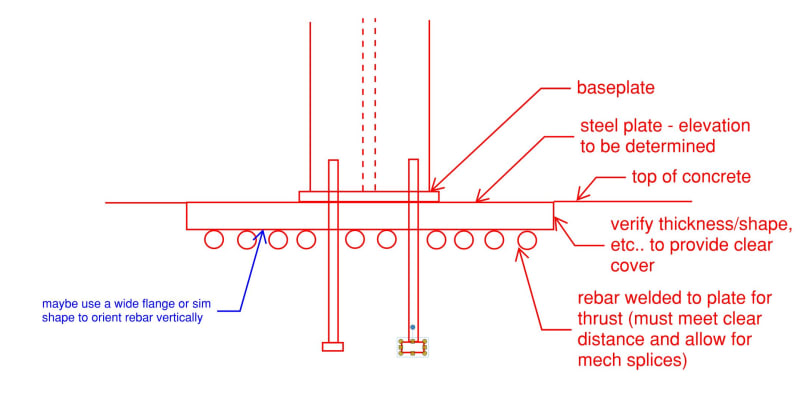Hi all! I am working on a PEMB with a 200' clear span, with factored horizontal reactions of 240kip at the baseplate. I am really struggling to get this magnitude of a shear reaction into the the pier and then transferred into the tie-beam. To make things extra fun, I have two frames where my tie-beams will intersect pits in the floor, and so the tie-beams want to drop down 24" below the top of the slab, which makes the pier ACI anchor rod checks impossible without an 8-ft square pier (I also tried the strut-and-tie approach with no luck).
All that aside, my "typical" tie-beam that I am somewhat comfortable with is 24"x16" concrete beam with (12) #10 bars. For various reasons (like welded/mechanical splices, and a slightly questionable approach to lapping the beam bars into the shear cone of the pier) I am thinking of using a concrete encased HP10x42 beam instead of rebar for a tie-beam.
Am I crazy; anyone ever done such a thing? Pro's: I could splice the beam to a setting plate with a heavy bar and hang my hat on the shear transfer; two beam splices in the span is pretty straight-forward; there's not a bunch of rebar to deal with, etc. Only Con that comes to mind is burying a steel beam even though it will be embedded in concrete....not sure why that gives me pause?
Appreciate any thoughts anyone may have!
All that aside, my "typical" tie-beam that I am somewhat comfortable with is 24"x16" concrete beam with (12) #10 bars. For various reasons (like welded/mechanical splices, and a slightly questionable approach to lapping the beam bars into the shear cone of the pier) I am thinking of using a concrete encased HP10x42 beam instead of rebar for a tie-beam.
Am I crazy; anyone ever done such a thing? Pro's: I could splice the beam to a setting plate with a heavy bar and hang my hat on the shear transfer; two beam splices in the span is pretty straight-forward; there's not a bunch of rebar to deal with, etc. Only Con that comes to mind is burying a steel beam even though it will be embedded in concrete....not sure why that gives me pause?
Appreciate any thoughts anyone may have!



